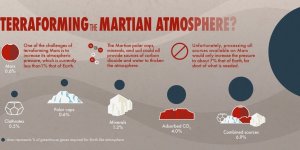| News / Space News |
NASA Finds a Large Amount of Water in an Exoplanet's Atmosphere
Scientists used NASA’s Hubble and Spitzer space telescopes to find the “fingerprints” of water in the atmosphere of a hot, bloated, Saturn-mass exoplanet some 700 light-years away. And, they found a lot of water. In fact, the planet, known as WASP-39b, has three times as much water as Saturn does.

Comprehensive spectrum of WASP-39b. Image credits: Artist's Concept: NASA, ESA, G. Bacon and A. Feild (STScI), and H. Wakeford (STScI/Univ. of Exeter)
Although the researchers predicted they’d see water, they were surprised by how much water they found in this “hot Saturn.” Because WASP-39b has so much more water than our famously ringed neighbor, it must have formed differently.
The amount of water suggests that the planet actually developed far away from the star, where it was bombarded by a lot of icy material. WASP-39b likely had an interesting evolutionary history as it migrated in, taking an epic journey across its planetary system and perhaps obliterating planetary objects in its path.
The team were able to analyze the atmospheric components of this exoplanet, which is similar in mass to Saturn but profoundly different in many other ways. By dissecting starlight filtering through the planet’s atmosphere into its component colors, the team found clear evidence for water. This water is detected as vapor in the atmosphere.
Located in the constellation Virgo, WASP-39b whips around a quiet, Sun-like star, called WASP-39, once every four days. The exoplanet is currently positioned more than 20 times closer to its star than Earth is to the Sun. It is tidally locked, meaning it always shows the same face to its star.
Its day-side temperature is a scorching 1,430 degrees Fahrenheit (776.7 degrees Celsius). Powerful winds transport heat from the day-side around the planet, keeping the permanent night-side almost as hot.
Although it is called a “hot Saturn,” WASP-39b is not known to have rings. Instead, is has a puffy atmosphere that is free of high-altitude clouds. (NASA)
YOU MAY ALSO LIKE




